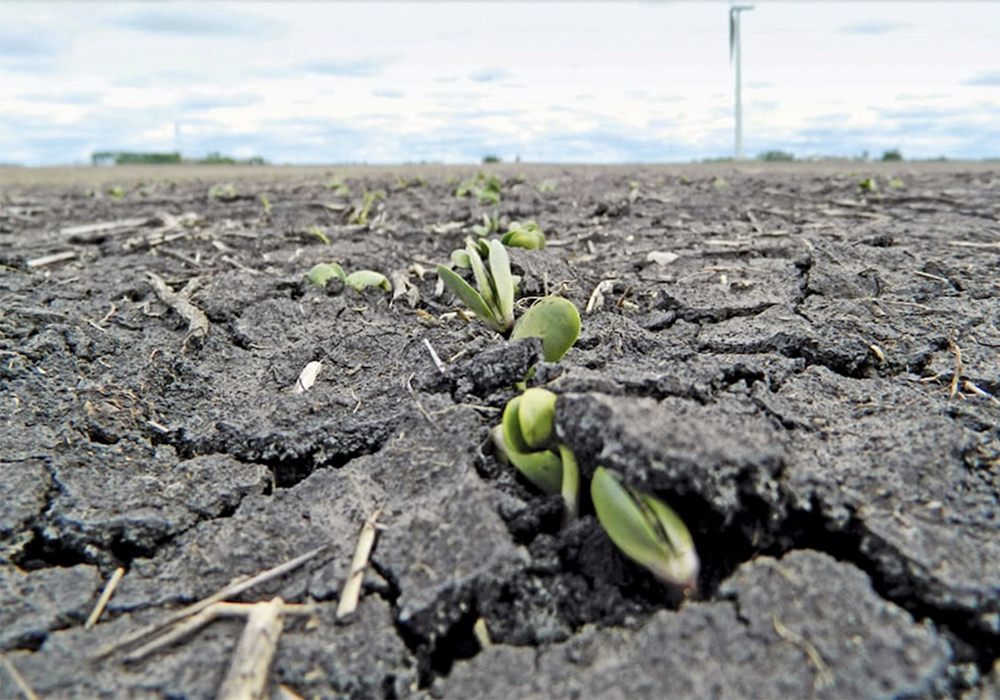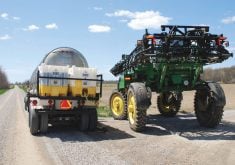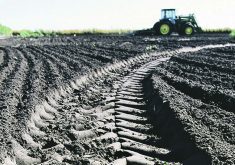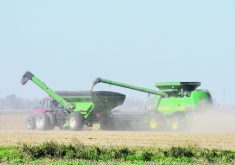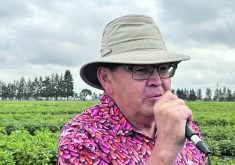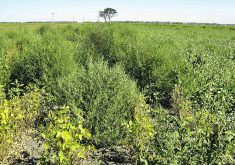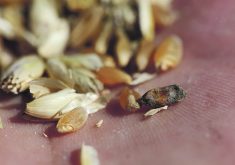With adequate rainfall and warmer soil temperatures, soybean seeding across Manitoba is well underway.
Manitoba Agriculture’s May 21 crop report placed soybean planting at 34 per cent complete.
If nighttime temperatures don’t warm up more than they have recently, soybean plants will likely emerge around 15 to 17 days after planting, said Dennis Lange, a pulse and soybean specialist with Manitoba Agriculture, in a May 22 Crop Talk webinar.
Read Also

Using artificial intelligence in agriculture starts with the right data
Good data is critical as the agriculture sector increasingly adopts new AI technology to drive efficiency, sustainability and trust across all levels of the value chain.
“Our temperatures have been warm during the day, but they cool off at night. We’re expecting 10, maybe up to 14 or 15 days or so before they start to come out of the ground.”
The danger of frost has likely passed and soybeans can tolerate short periods of lower temperatures, even to just below the freezing mark, if seedlings are out of the ground. It depends on the length and depth of the cold.
“If it’s been a little cooler and those beans are hardened off and they’re all emerged, soybeans can take a little bit colder of temperatures,” Lange said.
Once the beans emerge, frost damage is evident if the hypocotyl is pinched off just below the cotyledons. Those plants won’t bounce back. If the frost damage is above the cotyledons, some regrowth is possible from axillary buds, which can be seen about a week after the damage is done.
“If you end up having a frost, it’s probably best not to go look for a day or two, just to see if there’s any damage, and then try to give it about a week to see how it does regrow, because typically they do regrow quite nicely for soybeans,” Lange said.
Soybeans should be seeded three-quarters to an inch-and-a-quarter deep, especially when there’s been plenty of moisture. In drier years, growers may seed at a two inch depth, which can lead to slower emergence and potentially a reduced stand.
“Two inches is a little bit much but given that we’re getting towards the end of May here, if you have to go down that deep, you should still get pretty good emergence, considering how late in the season we are compared to if you are planting May 1,” Lange said.
If planted too shallow, seeds can dry out without enough rain. They usually get just enough moisture to swell but then the process halts and the seeds desiccate and die.
The ideal seeding rate for soybeans is 200,000 seeds per acre in a nine-inch row spacing, factoring in seed survivability. Whether growers use a narrow or wide row – Lange said many are planting a 30-inch row and dropping seeding rates to 180,000 plants per acre – the result should be 140,000 to 170,000 plants per acre.
To check this, producers should take plant counts about one month after seeding.
“It’s really important to do that because I think you need to have an assessment of your seed quality, and you need to have an assessment of your seeding equipment as well,” said Lange.
Producers dealing with drier conditions could end up with only 80,000 plants per acre. With soybeans, that shouldn’t be a problem if fields are kept clean during the growing season.
“I’ve seen stands as low as 60,000 plants per acre still put off 40 to 45 bushes per acre if it’s kept clean,” he said. “In the worst-case scenario, if you were down to 80,000 plants, I would still leave it in the field, keep it clean, and spray it throughout the season to keep the weeds out.”
Ideally, growers should see around 102,000 plants per acre on eight-inch row spacing, Lange said.
Rolling soybeans to push down rocks and break up root balls should be done about three days after seeding when the ground is firm and dry. In especially dry conditions, it’s possible to wait until after the beans emerge.
The worst time to roll is when the beans are just emerging and still at the hook stage, Lange said.
“That’s where you should not be rolling because you’re going to create a lot of damage to the seedling.”
It’s best to wait until seedlings are at the unifoliate stage, or ideally the trifoliate stage, and roll when temperatures are around 25 C or warmer in the afternoon. Plants will be pliable and able to bend back easily.
“You’ll probably still see some damage there, so I would definitely wait until the afternoon, until the plants are pliable,” Lange said.
If post-emergent rolling leads to some plant breakage, regrowth is possible, but a stand count is advised. If at 160,000 plants per acre and only two to three per cent are lost, it’s not a real cause for concern, Lange said. More than that and rolling should be delayed.
Lange said producers should pay particular attention to waterhemp this season because the weed has gained a foothold in the province.


